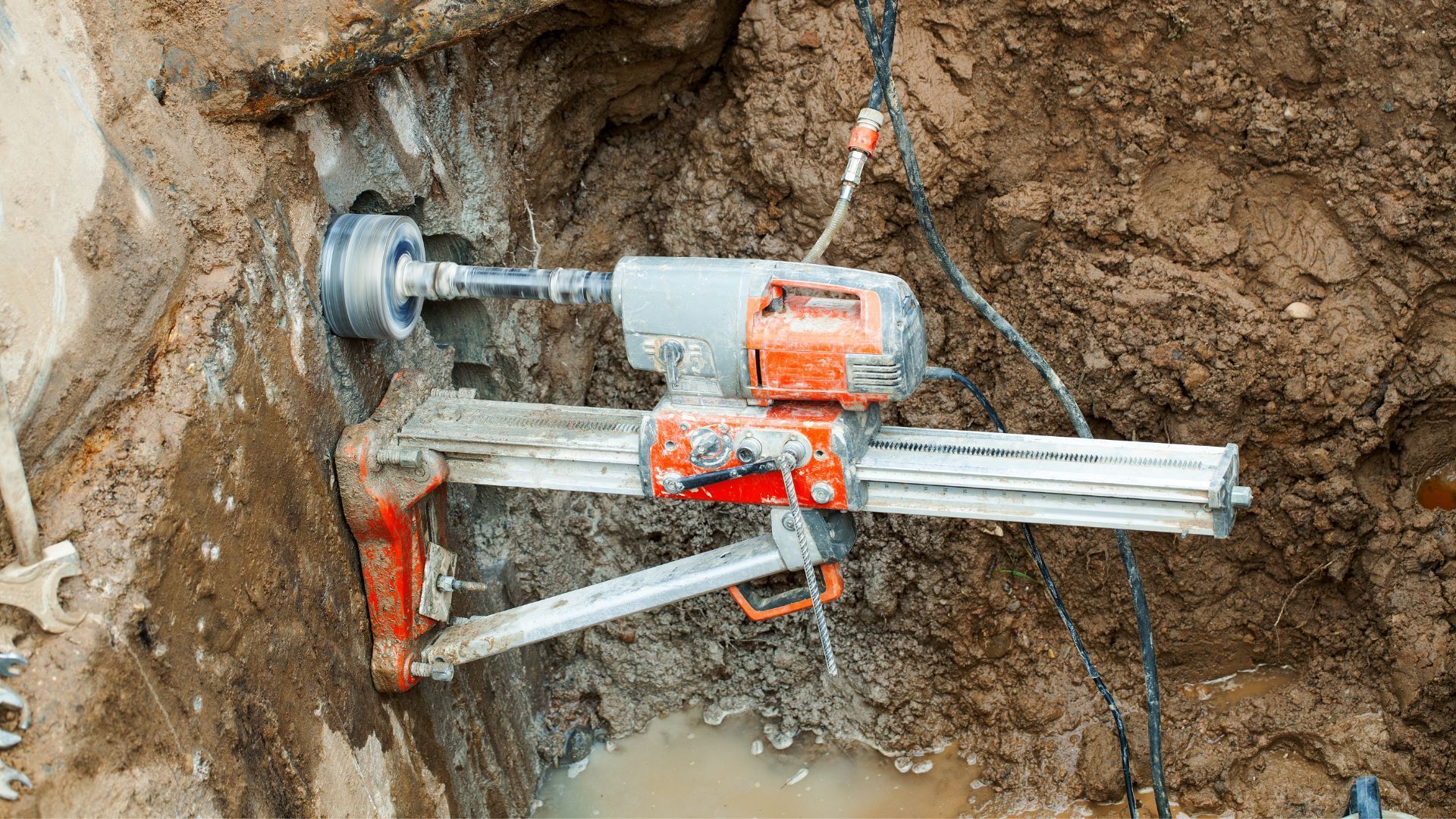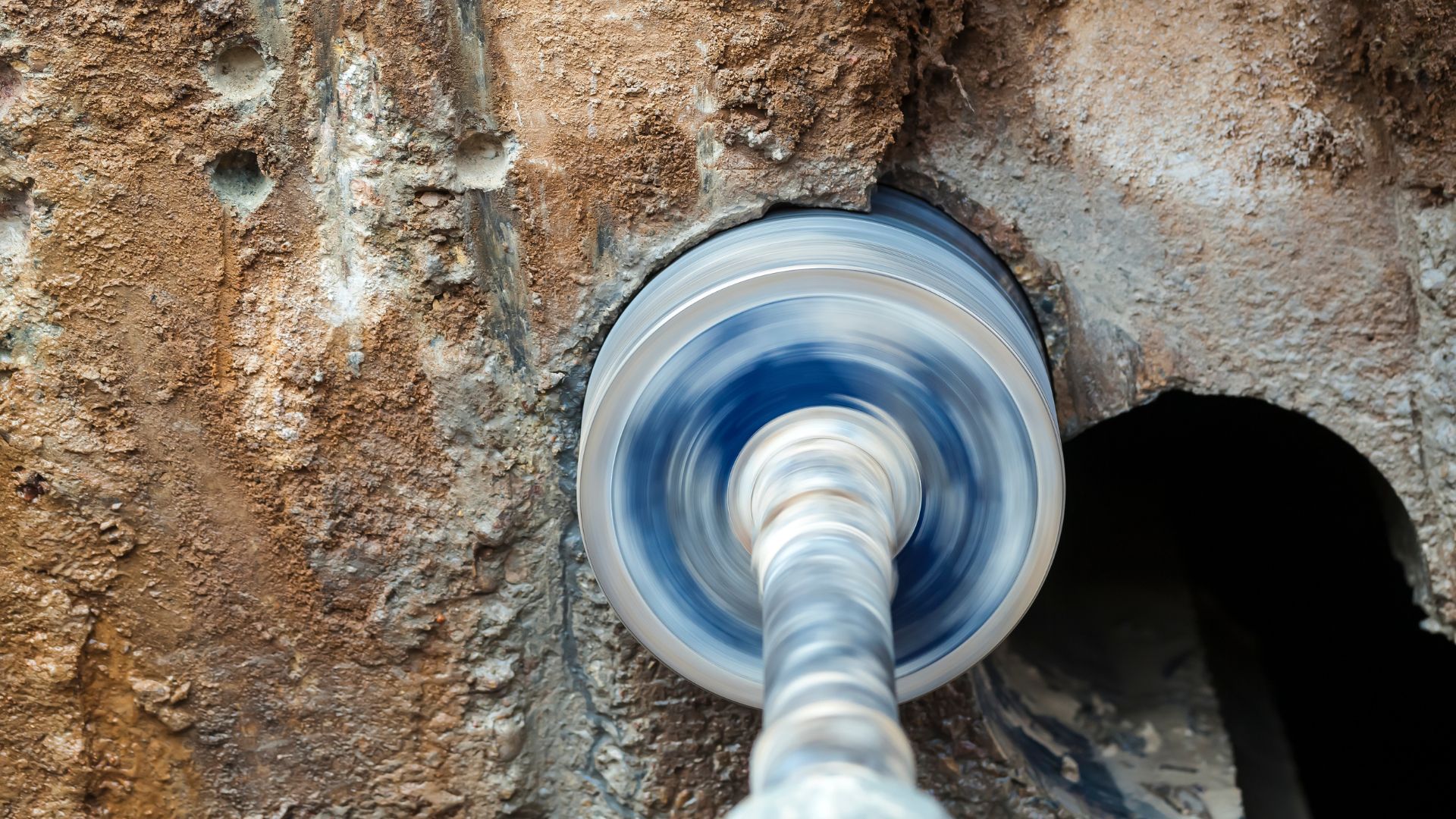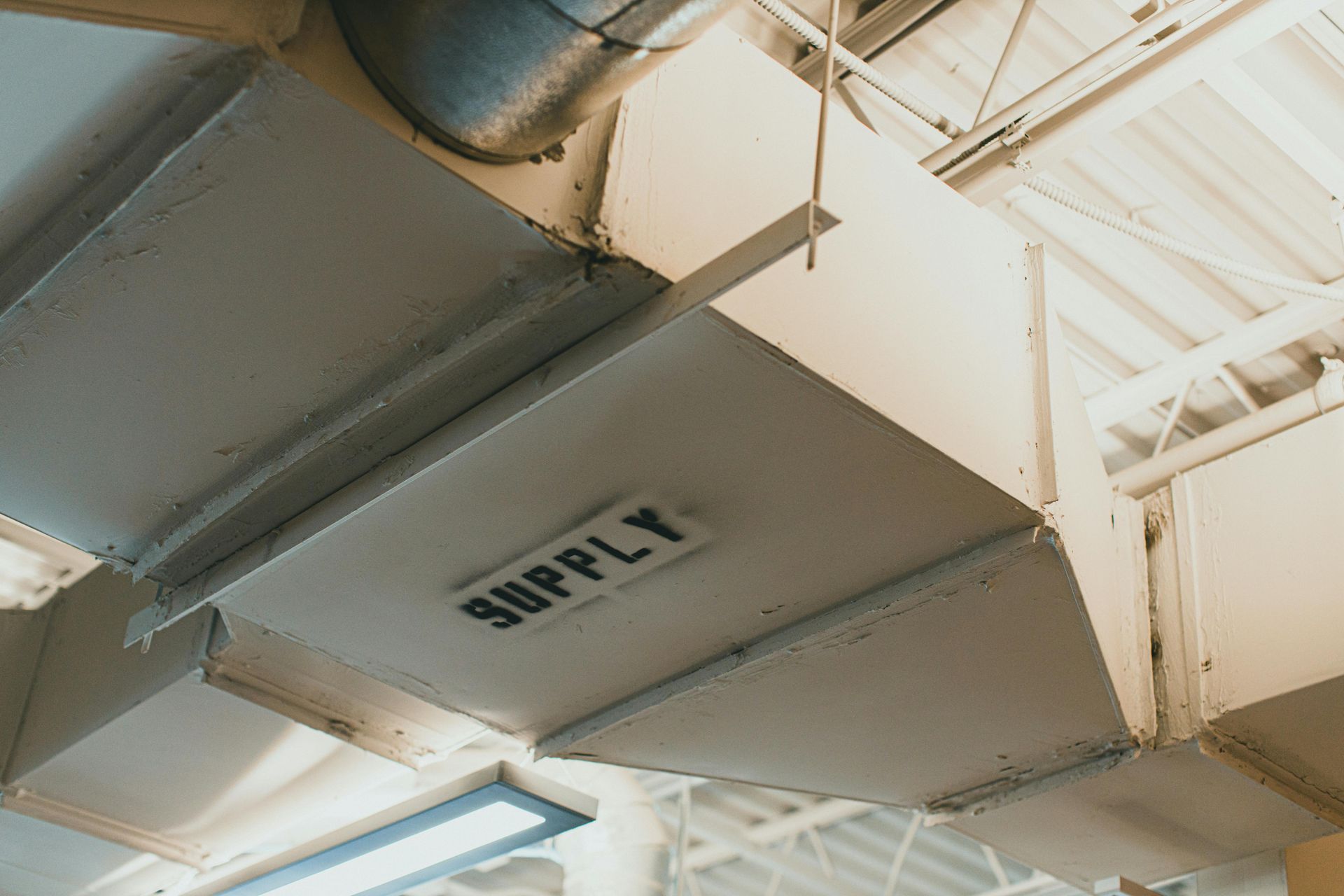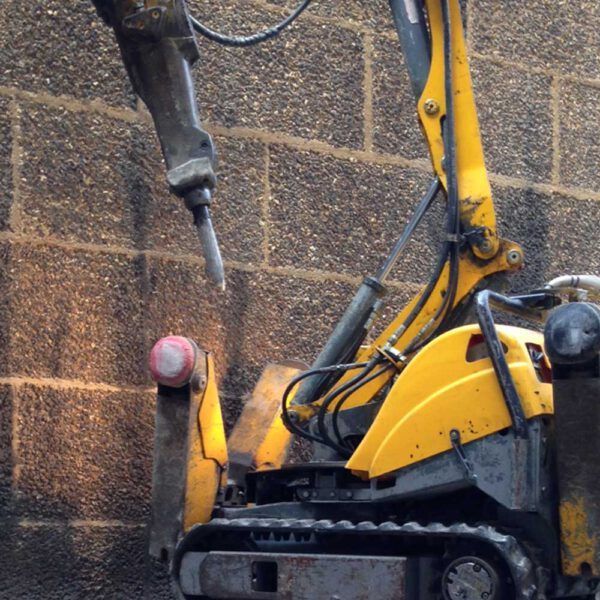This is a subtitle for your new post
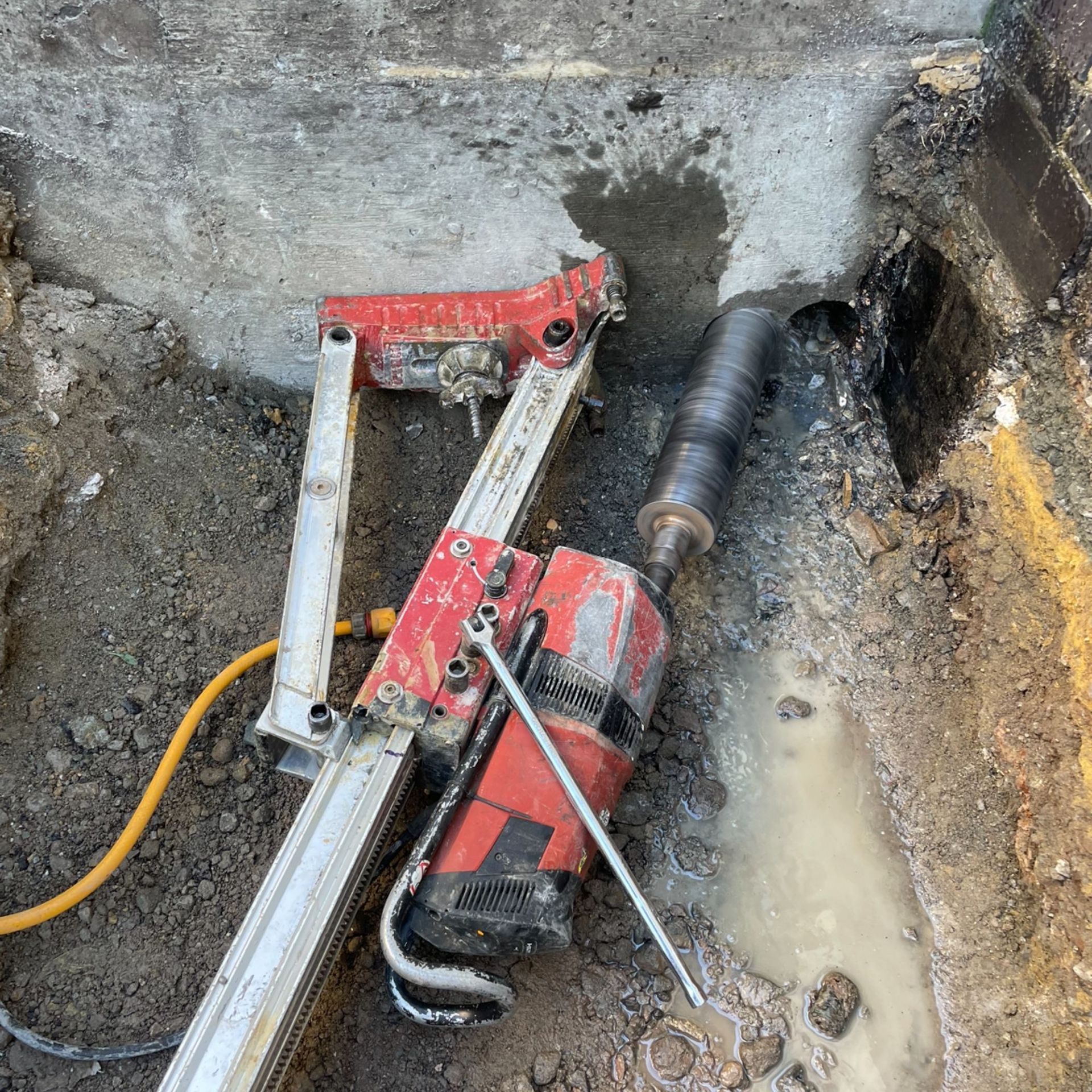
Diamond Drilling through concrete in live or occupied environments presents a challenge — especially when reinforcement, rebar, or embedded services are hidden within the structure. For M&E contractors, the ability to create accurate openings without damaging existing steelwork, cabling, or pipework is critical to keeping projects on schedule and within budget.
This article explains how diamond drilling enables safe, controlled work around reinforcement and embedded services, and outlines the best practices that every contractor should follow to maintain efficiency, precision, and safety.
Why Diamond Drilling Is Ideal for Reinforced Concrete
Diamond drilling uses rotating, diamond-impregnated cores that grind through even the toughest materials — including reinforced concrete — with exceptional precision.
Unlike percussive drilling methods, diamond drilling:
- Produces minimal vibration, reducing the risk of microcracks or spalling around rebar.
- Cuts through reinforcement cleanly when necessary, without dislodging surrounding concrete.
- Allows accurate positioning, even when services are densely packed.
- Can be used in vertical, horizontal, or inverted positions, making it highly versatile for M&E applications.
These attributes make diamond drilling the preferred choice when working in structures where strength, service continuity, and accuracy are non-negotiable.
Understanding Reinforcement and Embedded Services
Modern buildings are full of embedded components that can complicate drilling operations:
- Steel reinforcement (rebar) in slabs, beams, and columns
- Electrical conduits and trunking cast within floors or walls
- Pipework for water, gas, or drainage systems
- Post-tensioning cables in high-strength concrete structures
- Fire protection and communication systems
Hitting or cutting through any of these without proper planning can lead to serious safety hazards, service interruptions, or costly structural repairs. That’s why pre-drilling investigation and control are vital.
Best Practices for Diamond Drilling Around Reinforcement
Pre-Drilling Surveys and Scanning
Before any drilling begins, contractors should carry out concrete scanning using tools like GPR (Ground Penetrating Radar) or ferroscan detectors. This identifies rebar patterns, conduits, and embedded services so that drill positions can be adjusted accordingly.
Accurate Marking and Setting Out
Once scanning is complete, drill points should be marked precisely. Alignment must account for the position of reinforcement bars, slab depth, and the direction of embedded systems. Accurate layout helps prevent costly mistakes and rework during M&E installations.
Controlled Cutting Around Rebar
If rebar cannot be avoided, diamond drilling allows controlled penetration through the steel, maintaining structural integrity. Operators use reduced feed pressure and water cooling to prevent overheating and ensure clean cuts.
Cooling and Lubrication
Continuous water feed systems are essential to manage heat and dust. Cooling keeps the diamond segments sharp and reduces friction, extending tool life and ensuring consistent performance.
Speed and Pressure Management
Operators must adjust RPM and feed pressure based on the material composition and tool size. Proper balance prevents snagging on reinforcement and ensures a smooth, vibration-free cut.
Safety and Coordination
All drilling should be performed following approved RAMS (Risk Assessment & Method Statements) and in coordination with site managers and M&E teams. This ensures that live services are isolated or protected before work begins.
Working Around Embedded Services in Live Buildings
In live environments, services such as electrical wiring, HVAC systems, and plumbing lines often remain operational.
Diamond drilling’s precision and low-impact operation make it ideal for creating openings while maintaining building functionality.
- Non-percussive technology prevents damage to nearby cables and pipes.
- Dust suppression and water control ensure clean, compliant working conditions.
- Compact drilling rigs can operate in plant rooms, risers, and tight service corridors without obstruction.
This allows M&E contractors to complete installations without shutdowns or disruption to occupants — a major advantage on refurbishment and retrofit projects.
Case Study Example
During a recent bank refurbishment project in central London, PCDD was contracted to create a new doorway through a reinforced vault wall.
The team used diamond drilling to core overlapping holes along the outline before breaking out the section.
This method offered precise control, prevented damage to embedded reinforcement, and avoided any compromise to the surrounding vault structure — essential for both safety and security.
Health, Safety & Compliance
Diamond drilling work around reinforcement and services must always meet the highest safety and compliance standards. PCDD operates under:
- CSCS and SSSTS certification for all site operatives
- Comprehensive RAMS documentation
- Compliance with HSE, COSHH, and BS EN 206 standards
- Strict on-site supervision and coordination with main contractors
These protocols ensure every drilling operation is performed safely, efficiently, and within regulation.
Frequently Asked Questions
Can diamond drilling cut through rebar?
Yes — diamond-tipped cores can safely cut through reinforcement without compromising the surrounding concrete.
How do you avoid hitting embedded services?
By performing pre-drilling scans (GPR or ferroscan) and coordinating closely with M&E teams before drilling.
Is diamond drilling suitable for live buildings?
Absolutely. Its quiet, low-vibration process allows work in occupied or sensitive environments without disrupting operations.
Do you need water for diamond drilling?
Yes — a constant water feed helps cool the core, control dust, and maintain cutting efficiency.
Working around reinforcement and embedded services requires precision, experience, and planning.
Diamond drilling provides the safest and most effective solution for M&E contractors who need accurate penetrations through complex concrete structures. By following best practices — from scanning to controlled cutting — projects can be completed faster, cleaner, and without compromising safety or structure.
👉 Discover how PCDD’s Diamond Drilling London services help M&E contractors deliver efficient, compliant work in challenging environments. Call us now!
